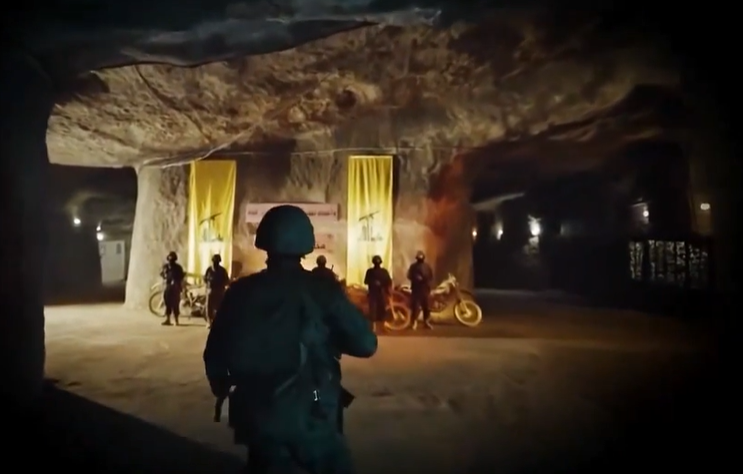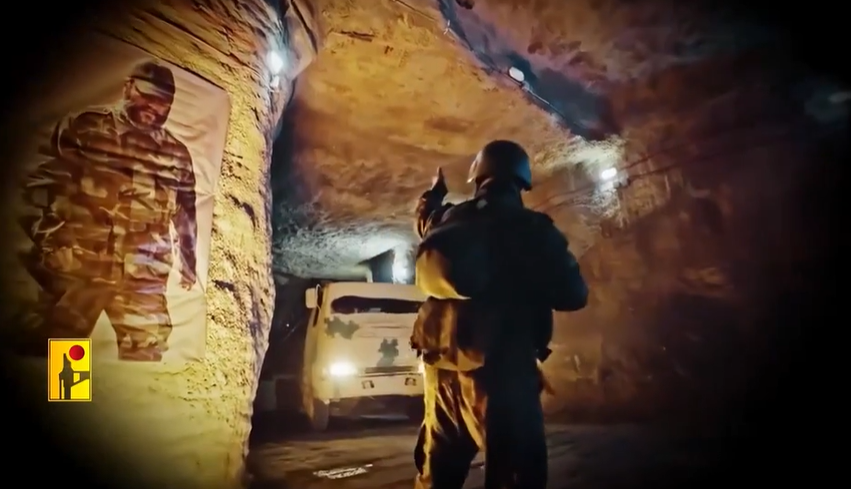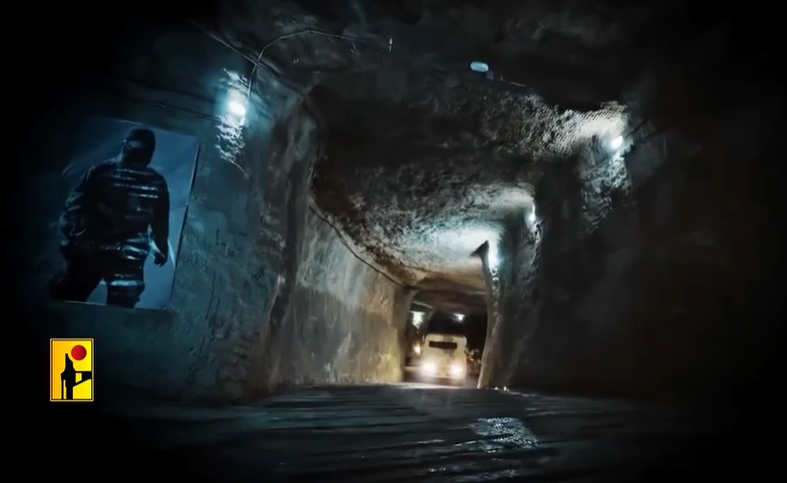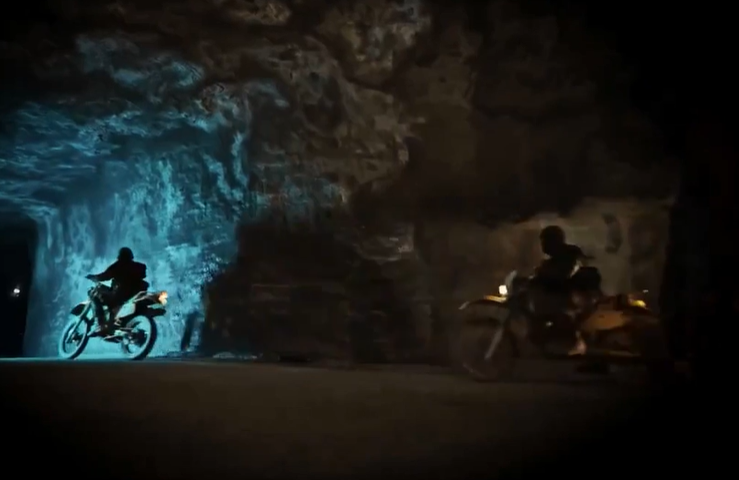Lebanese terrorist organization Hezbollah has unveiled a vast underground network of tunnels and roads designed for storing and transporting missiles, in what appears to be a direct threat to Israel.

The revelation came through a chilling video released by the group on August 18, 2024, showcasing their extensive hidden infrastructure.
The video displays large underground roads capable of accommodating trucks transporting heavy weaponry. Posters of Hezbollah leaders and soldiers adorn the walls of the tunnels, while footage shows armed men on motorcycles navigating through what the group calls a “missile city.”

Trucks loaded with enormous missiles are seen traversing the dark underground passages. Drone footage reveals the extensive nature of the tunnel network, which also appears to house military technology and computer systems.
In the video, a narrator ominously states: “These targets are in our possession and its coordinates are in our hands. These missiles are placed, deployed, and focused on targets and in perfect secrecy.” The narrator further threatens that if Israel imposes war on Lebanon, it will “face a destiny and reality it didn’t expect any day.”

This revelation comes amid escalating tensions in the region. It follows recent Israeli airstrikes that killed Hezbollah commander Fuad Shukr in Beirut and a Hamas leader in Tehran, prompting vows of retaliation from both groups.
The situation has raised alarm internationally, with the U.S. advising its citizens in Lebanon to leave on the first available flight. British troops are reportedly positioned in the region for potential military-grade evacuation operations.

This development is part of a broader pattern of underground military infrastructure in the region. In January, Israeli forces claimed to have discovered Hamas rocket factories beneath civilian evacuation routes in Gaza.

The reveal of Hezbollah’s tunnel network significantly escalates tensions in an already volatile region. It demonstrates the group’s advanced military capabilities and raises concerns about the potential for a wider conflict involving Israel, Lebanon, and potentially other regional actors.

As the situation continues to evolve, international observers and regional stakeholders will be closely monitoring developments, with particular focus on potential Israeli responses and the broader implications for Middle Eastern stability.



